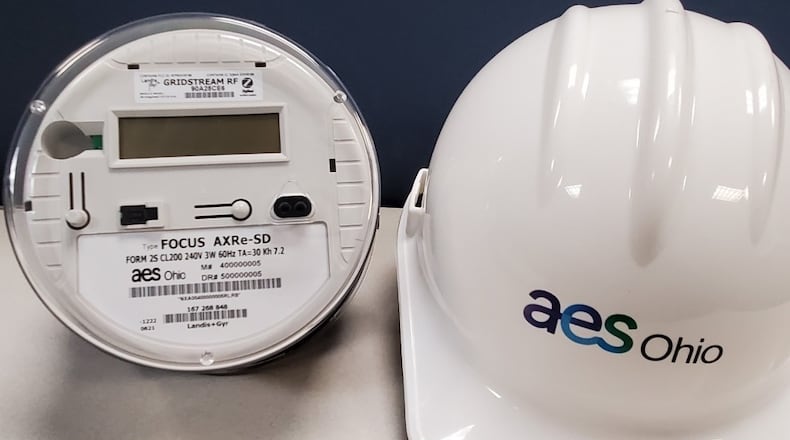“It basically represents the entire energy industry moving to a new era,” said Mary Ann Kabel, a spokeswoman for AES Ohio, the former Dayton Power & Light.
The company hopes that new era will mean more efficient usage and communication, quicker pinpointing of power outages and faster power restoration when outages happen, using digital technology to re-route distribution around problems.
That new era will also mean customers using 1,000 kilowatts of electricity a month will see an estimated 94-cent increase in monthly bills, according to the estimate AES Ohio offered PUCO.
The nearly $78 million investment in “smart meters “ or advanced metering infrastructure across the service area, is an early step, one that might be seen as the heart of the coming “smart grid” system.
Jason Dorsey, AES Ohio manager of metering services, said a metering vendor has been chosen and contracts for installation of the new meters are in place.
“We have people here locally, boots on the ground, walking around and doing network surveys,” Dorsey said. “For these meters to communicate, you need to have that network installed out there.”
With the meters in place — typically placed in the socket of the previous meter — readings and billing will be performed in an automated fashion, Dorsey said. If meter readers needed access to property before, they may not need that access with the new meters, he said.
Right now, the expectation is that AES Ohio will begin deploying meters before the end of the year, Dorsey said.
The project will run through the middle of 2025. By that time, nearly all AES Ohio customers should have a smart meter in place, Dorsey said.
The meters open the door to two-way communication with the utility and a better understanding of the location of outages, the company says. The utility won’t need a call from a customer to see that a power outage has happened.
“It’s really compressing that time frame,” Kabel said.
In phase 1 of the rollout, AES Ohio will be expected spend up to $267 million over the next four years on new meters and self-healing grid technologies.
Also part of the plan: Investing $5.1M in rebates for electric vehicle charging stations; $109 million in “self-healing” technology and $1.4 million in rebates on “smart” thermostats.
AES Indiana started down the smart grid path two years ago, while Duke Energy and AEP have launched their own efforts.
In a recent filing with the Public Utilities Commission of Ohio, Duke Energy Ohio requested an approximately $55 million increase to its distribution rates to support the rollout of smart meters.
In a statement, Duke said the monthly electric bill for a typical residential customer using 1,000 kilowatt-hours a month would increase by 3.86%, or less than 15 cents per day.
About the Author



